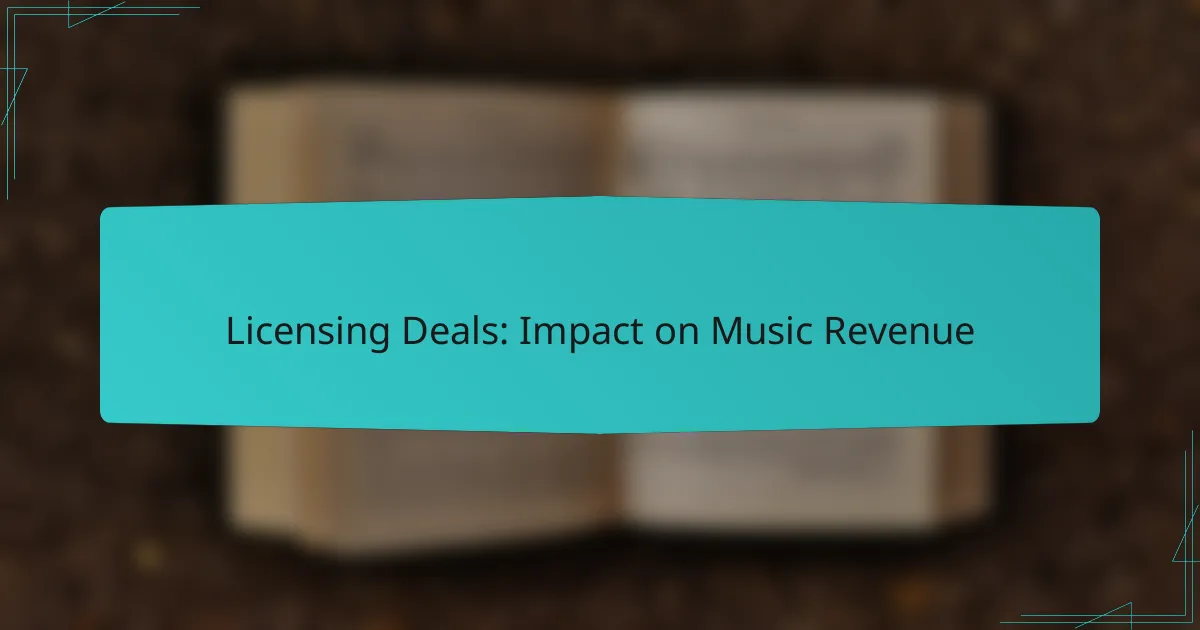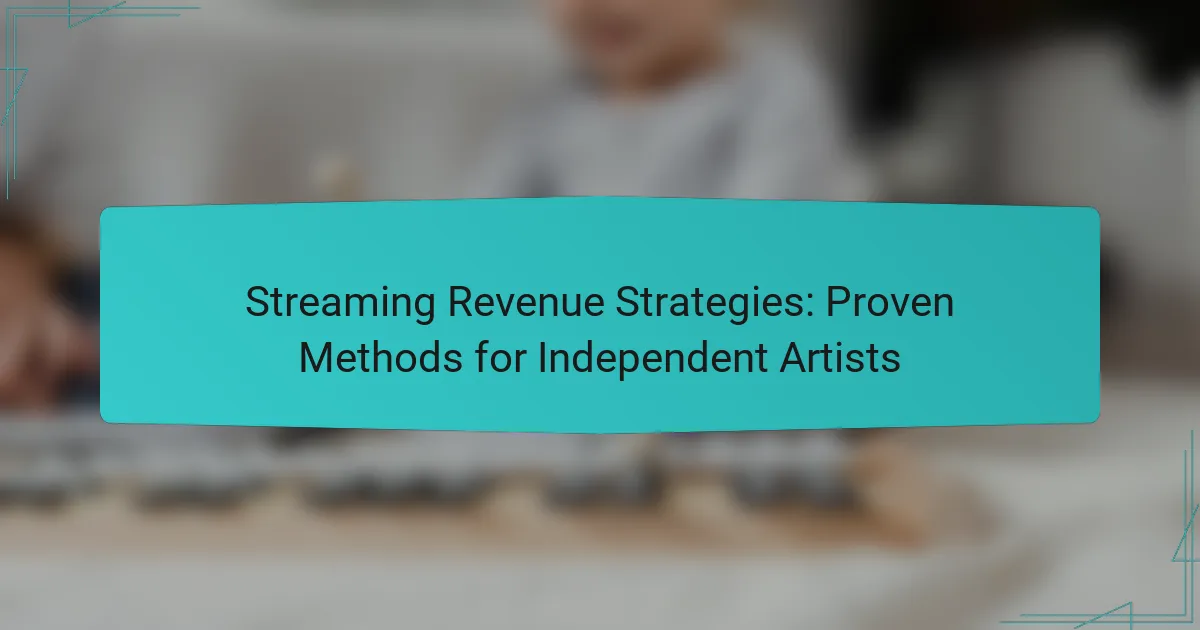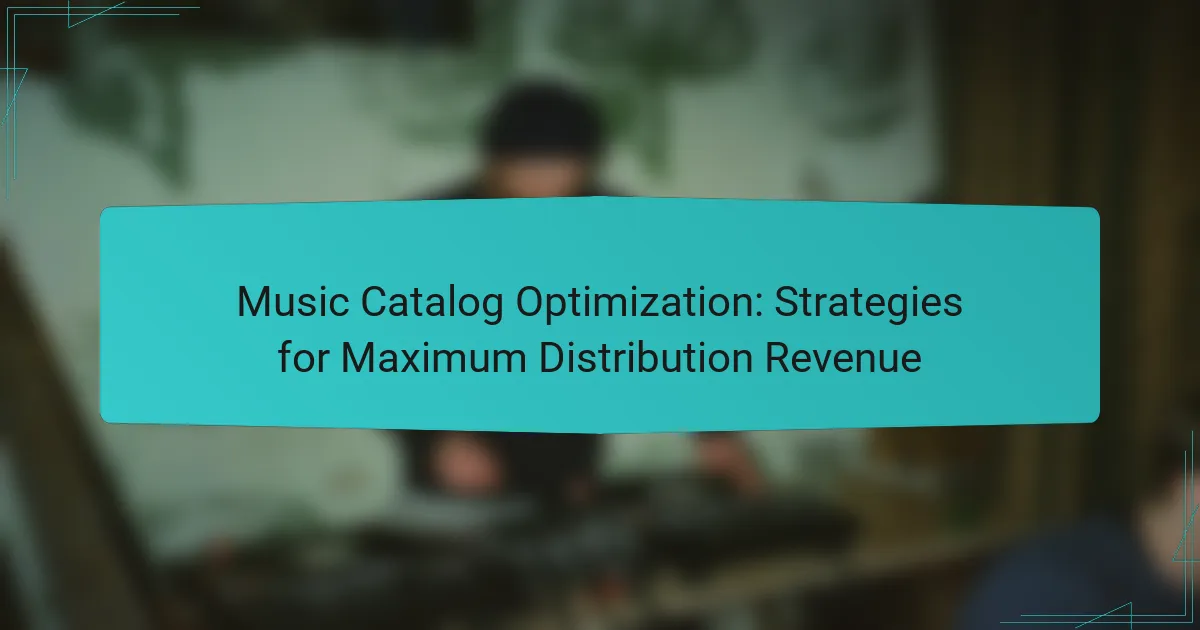Digital music distribution plays a crucial role in maximizing earnings from sync licensing for artists. By strategically placing their music in various media and collaborating with industry professionals, musicians can significantly enhance their visibility and revenue potential. Understanding the sync licensing landscape and utilizing effective distribution platforms can lead to lucrative opportunities in film, television, and advertising.
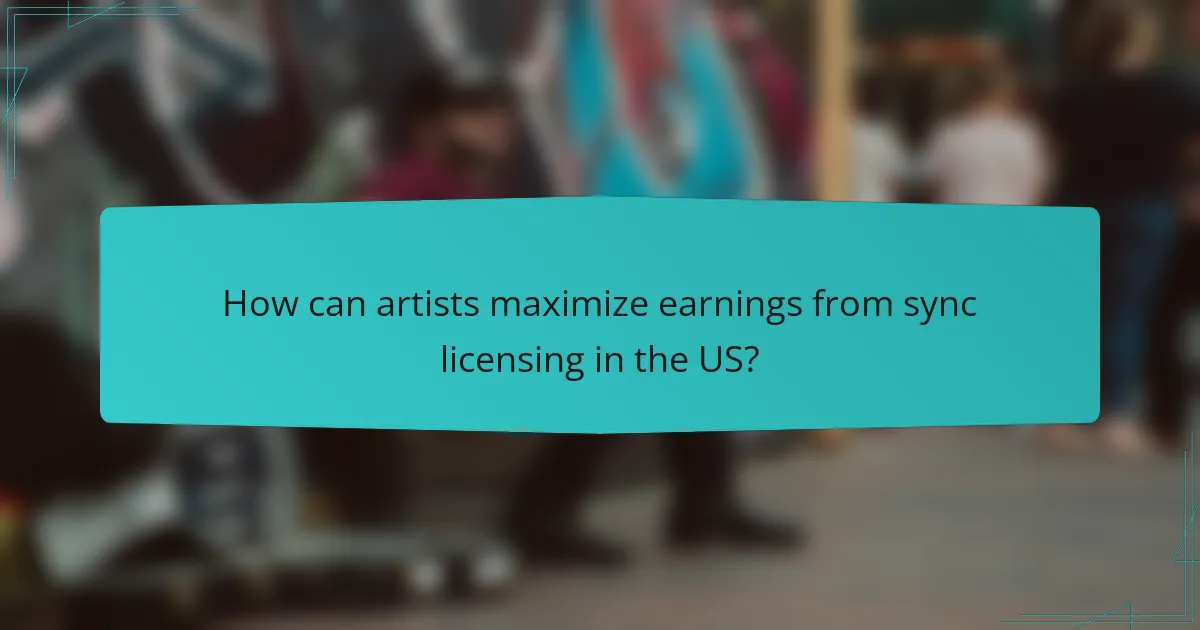
How can artists maximize earnings from sync licensing in the US?
Artists can maximize earnings from sync licensing in the US by strategically placing their music in various media, collaborating with industry professionals, and leveraging online platforms for visibility. Understanding the sync licensing landscape and actively engaging with music libraries and supervisors can significantly enhance earning potential.
Utilizing music libraries like AudioJungle
Music libraries such as AudioJungle provide a platform for artists to sell their tracks for use in videos, commercials, and other media. By uploading high-quality, well-tagged music, artists can increase their chances of being discovered by content creators looking for specific sounds.
Consider offering a range of music styles and lengths to appeal to diverse projects. Pricing can vary, but many artists set their tracks between $20 to $100, depending on the complexity and exclusivity of the music.
Collaborating with music supervisors
Music supervisors play a crucial role in selecting songs for film, television, and advertising. Building relationships with these professionals can lead to more sync opportunities. Attend industry events, network on platforms like LinkedIn, and consider reaching out directly to introduce your music.
When collaborating, be prepared to provide high-quality recordings and clear licensing terms. Offering a flexible approach to fees and rights can make your music more appealing to supervisors working with tight budgets.
Leveraging social media for exposure
Social media platforms are powerful tools for artists to showcase their music and connect with potential clients in the sync licensing space. Regularly share snippets of your tracks, behind-the-scenes content, and success stories to engage your audience.
Utilize hashtags related to sync licensing and music production to reach a broader audience. Engaging with content creators and participating in relevant online communities can also increase your visibility and lead to sync opportunities.

What are the best platforms for digital music distribution?
The best platforms for digital music distribution help artists get their music onto streaming services and digital stores while maximizing earnings. Key options include CD Baby, DistroKid, and TuneCore, each offering unique features tailored to different needs.
CD Baby for independent artists
CD Baby is a popular choice for independent artists looking to distribute their music widely. It offers a straightforward, one-time fee structure, allowing artists to keep 100% of their royalties after the initial payment. This model is beneficial for those who prefer not to deal with ongoing subscription fees.
In addition to distribution, CD Baby provides services like sync licensing opportunities, which can enhance earnings through placements in film, TV, and commercials. Artists can also access tools for marketing and promotion, making it a comprehensive option for independent musicians.
DistroKid for fast releases
DistroKid is known for its speed and efficiency, allowing artists to upload music and have it live on platforms like Spotify and Apple Music within a day. With an annual subscription fee, artists can release an unlimited number of songs, making it ideal for those who frequently produce new content.
One key advantage of DistroKid is its user-friendly interface and automatic revenue splitting feature, which is useful for collaborations. However, artists should be aware that DistroKid takes a percentage of earnings from certain services, so it’s essential to review the terms carefully.
TuneCore for comprehensive services
TuneCore offers a robust suite of services for artists, including music distribution, publishing administration, and marketing tools. While it charges an upfront fee for each release, it provides detailed analytics and reporting, helping artists track their performance across platforms.
TuneCore is particularly beneficial for artists seeking to manage their publishing rights and earn additional revenue through licensing. However, the costs can add up, so artists should weigh the benefits of comprehensive services against their budget and distribution goals.
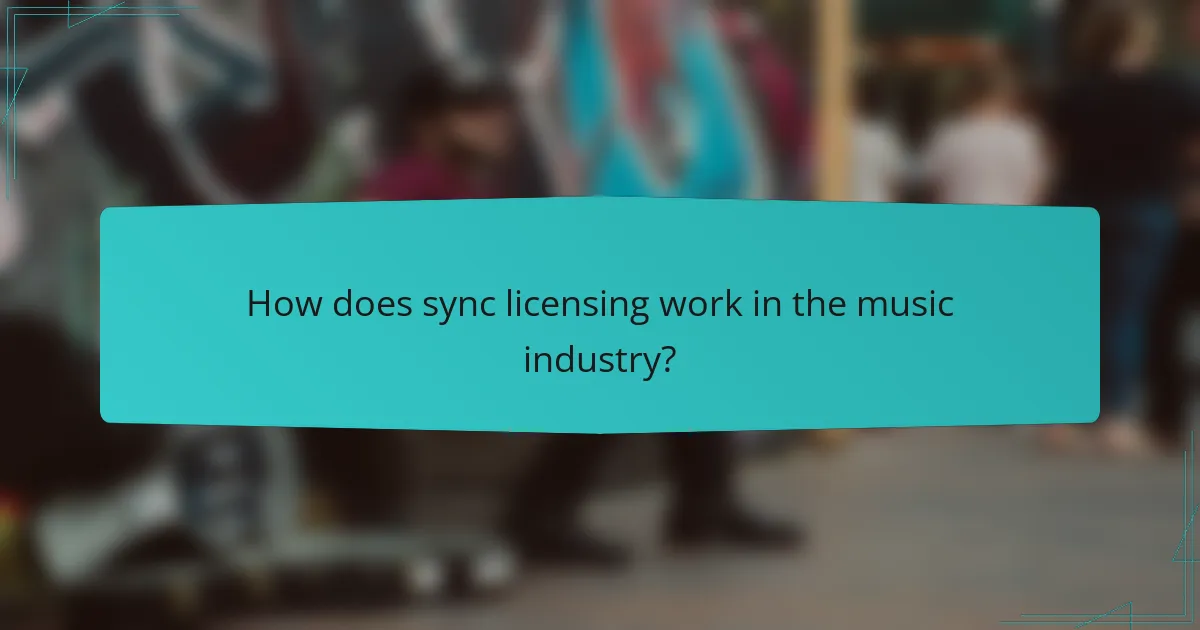
How does sync licensing work in the music industry?
Sync licensing involves granting permission to use a piece of music in conjunction with visual media, such as films, TV shows, or advertisements. This process allows artists and rights holders to earn revenue by having their music featured in various media formats.
Understanding licensing agreements
Licensing agreements are contracts that outline the terms under which music can be used in visual media. These agreements specify the rights granted, duration of use, and compensation details. It’s crucial for artists to understand these terms to protect their interests and maximize earnings.
Key elements often include the scope of use, territory, and whether the license is exclusive or non-exclusive. Artists should carefully review these agreements and consider consulting with a legal professional to ensure fair terms.
Types of sync licenses available
There are several types of sync licenses that artists can pursue, each catering to different uses of music. The most common types include master use licenses, which cover the recording of the song, and synchronization licenses, which pertain to the underlying composition.
For example, a master use license is needed if a specific recording of a song is used in a film, while a sync license is required for the song’s composition to be played alongside visuals. Understanding these distinctions helps artists negotiate better deals and ensures they receive appropriate compensation for their work.
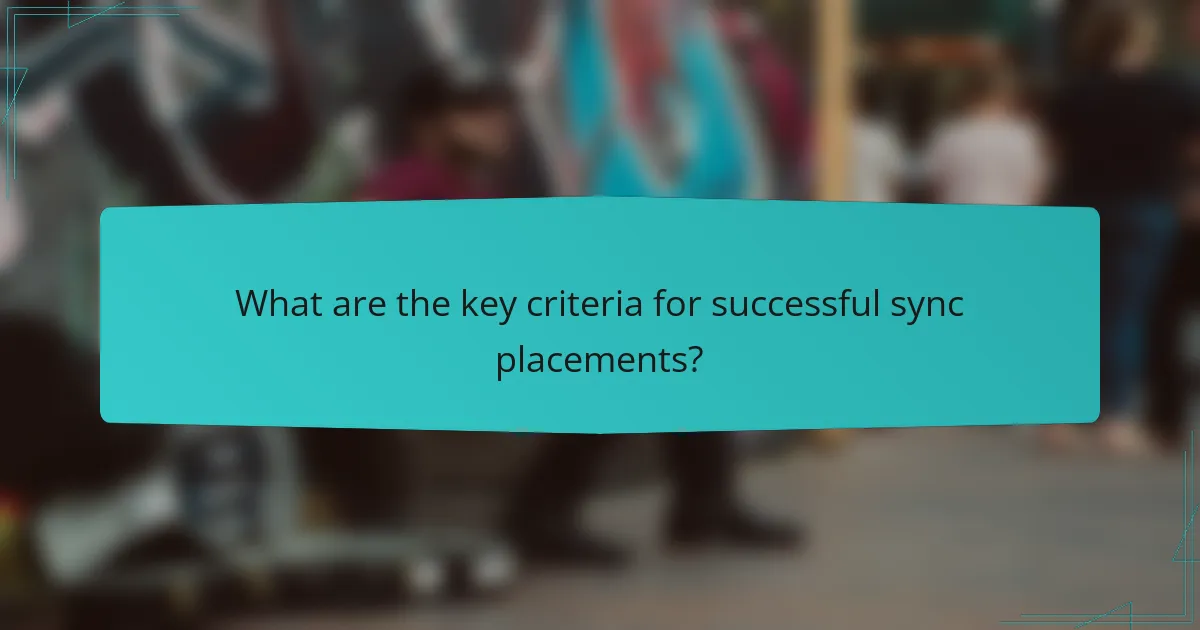
What are the key criteria for successful sync placements?
Successful sync placements depend on the quality of music production and its relevance to the visual media it accompanies. These criteria ensure that the music enhances the viewing experience and meets the expectations of content creators.
Quality of music production
The quality of music production is crucial for sync placements, as high-quality tracks are more likely to catch the attention of music supervisors. This includes clear mixing, professional mastering, and overall polished sound. Tracks should be radio-ready, with a focus on clarity and balance across frequencies.
Investing in professional production can significantly increase the chances of placement. Consider collaborating with experienced producers or utilizing high-quality recording equipment to achieve industry standards. A well-produced track can stand out in a competitive market.
Relevance to visual media
Relevance to visual media is essential for sync licensing success. Music should evoke the right emotions and fit the tone of the project, whether it’s a commercial, film, or TV show. Understanding the context in which your music will be used can guide your creative choices.
To enhance relevance, analyze the themes and moods of popular media in your target genre. Tailor your compositions to align with current trends, ensuring they resonate with the intended audience. This strategic approach can increase the likelihood of your music being selected for sync opportunities.
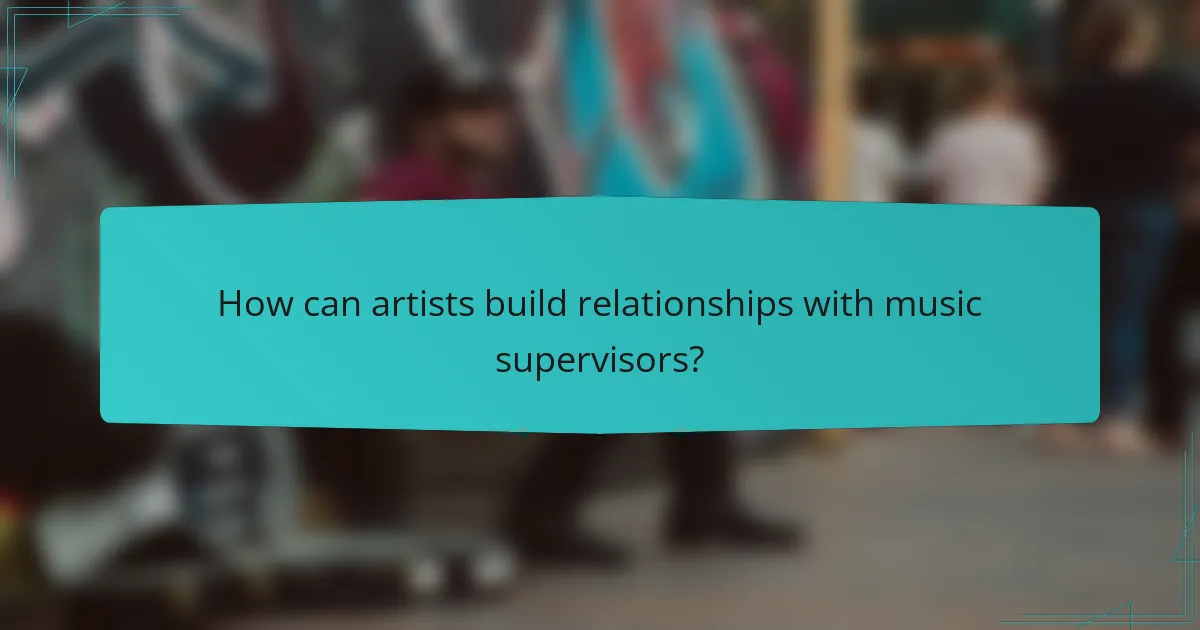
How can artists build relationships with music supervisors?
Artists can build relationships with music supervisors by actively engaging in networking opportunities and implementing personalized outreach strategies. Establishing these connections is crucial for securing sync licensing deals and maximizing earnings from music placements.
Networking at industry events
Attending industry events such as music conferences, film festivals, and networking meetups is an effective way for artists to connect with music supervisors. These gatherings provide a platform to showcase talent, exchange ideas, and discuss potential collaborations.
When networking, artists should prepare a concise pitch about their music and its suitability for various media. Bringing promotional materials, like business cards or demo reels, can leave a lasting impression. Follow-up communication after the event is essential to reinforce connections made.
Personalized outreach strategies
Personalized outreach involves crafting tailored messages to music supervisors that highlight specific aspects of an artist’s work relevant to their projects. Researching the supervisor’s past projects and preferences can help artists create compelling pitches that resonate.
Using email or social media for outreach can be effective, but artists should avoid generic messages. Instead, they should reference specific works of the supervisor and explain how their music aligns with current or upcoming projects. Consistency in follow-ups, without being overly persistent, can help maintain the relationship.
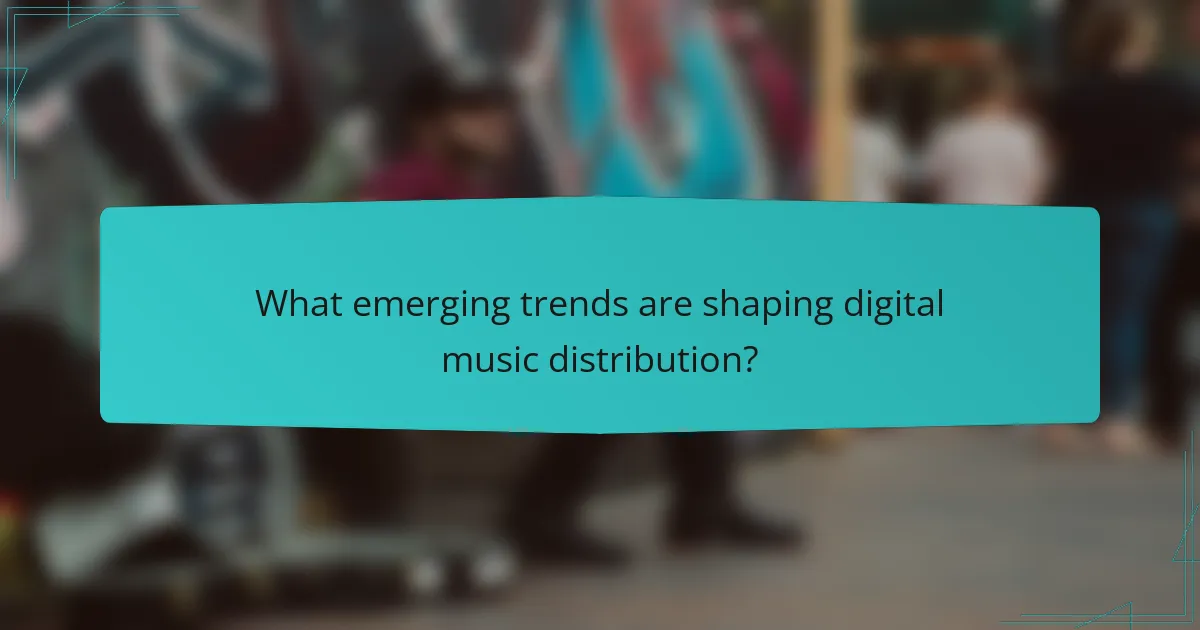
What emerging trends are shaping digital music distribution?
Emerging trends in digital music distribution are significantly influenced by technology and consumer behavior. Key developments include the rise of artificial intelligence in music creation, the growing importance of data analytics, and the increasing integration of social media platforms in music marketing.
Rise of AI in music creation
The rise of artificial intelligence in music creation is transforming how artists produce and distribute their work. AI tools can analyze vast amounts of data to generate music that aligns with current trends, helping artists create more appealing content.
Musicians can leverage AI for tasks such as composing melodies, generating beats, or even mastering tracks. This can reduce production time and costs, allowing independent artists to compete more effectively in the market.
However, relying too heavily on AI may lead to a loss of personal touch in music. Artists should balance AI assistance with their unique creative input to maintain authenticity and connection with their audience.

